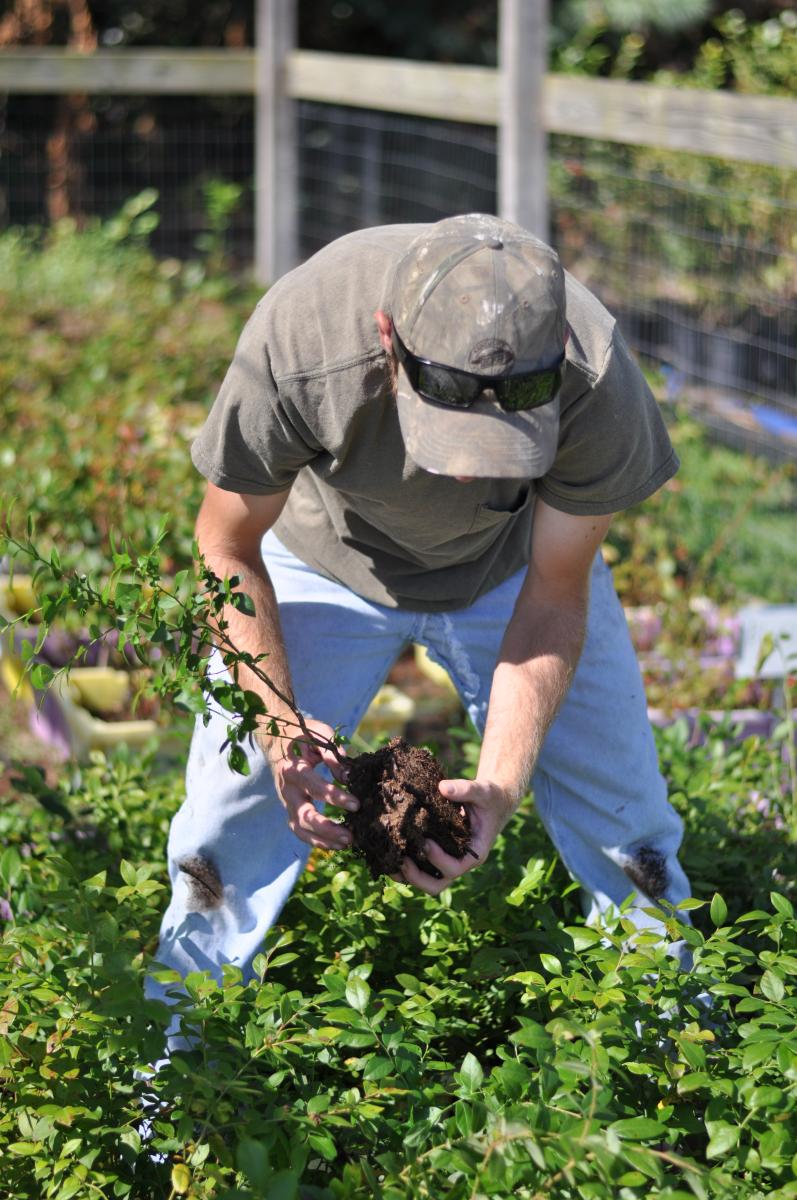50 tons of blueberries exported and new markets opened: the results of Georgian Agritouch in 2022
Georgian company Agritouch has helped establish more than 150 hectares of blueberries orchards in Georgia in the past year and expand export markets for blueberries. Eka Vepkhvadze, co-founder of Agritouch LLC, told EastFruit about this.
"The blueberries has been one of the main directions of the company for several years," he said.
According to Eka Vepkhvadze, Agritouch became an exclusive partner of the Bank of Georgia in a special project on blueberries in 2022 and now serves as an intermediary between the bank and the project beneficiaries.
"As part of the project, we help the company, a potential beneficiary, draw up a budget for its project and monitor the expenditure of loan funds. We also provide agronomic and other consultations at subsidized rates, both at the stage of orchard establishment and cultivation of blueberries, and up to the start of fruiting."
"Last year 10 companies received loans from the Bank of Georgia under the blueberries development project. As a result, about 100 hectares of orchards from blueberries were planted in western Georgia, mainly in the Samegrelo, Guria and Adjara regions," said Eka Vepkhvadze.
He pointed out that all these companies are beneficiaries of state "preferential agricultural credit," that is, they receive support from the state. They are also not restricted in their right to participate in other projects of the state or international organizations.
According to Eka Vepkhvadze, in addition to participating in the Bank of Georgia project, Agritouch provided consulting services to other Georgian producers at blueberries and started orchards of blueberries with a total area of 50 hectares.

At the same time, Agritouch, which owns a refrigeration plant in the Ozurgeti region (Guria), continued to export blueberries purchased from regular partner farmers.
"For several years we have been supplying blueberries to Gulf countries, namely Qatar, Bahrain and the United Arab Emirates. In 2022, Malaysia and Hong Kong (China) became our export markets. We export by air freight, in small batches. Last year the export volume was about 50 tons," said Eka Vepkhvadze.
According to Eka Vepkhvadze, demand for blueberries in 2022 was good, although export prices for blueberries were slightly lower than in the previous season. For example, for sales to Gulf countries, prices were at most $4-5/kg (excluding transportation costs).
"The blueberries on the Russian market were more expensive, but we don't work with them," he said.In general, according to Eka Vepkhvadze, blueberries remain berries with high export potential for Georgia.
Regarding Agritouch's plans for 2023, Eka Vepkhvadze says that the company intends to develop all of its areas of interest, including assisting farmers in arranging orchards from blueberries, cooperation with the Bank of Georgia, and exports of products and services. According to her, this year the company plans to increase its export volume and enter the EU and Central Asian markets.
In addition, Agritouch entered into an agreement with the Spanish company Sansan, under which it became the exclusive supplier of its products in Georgia this year. Specifically, these are specially designed pots for growing berries, containers for packaging berry products, etc.
INTERVIEW WITH SHOTO TSUKOSHVILI
Also speaking exclusively for Italian Berry about Georgia's current situation was Shoto Tsukoshvili, Berry Value Chain Manager of the USAID and CNFA program, subsidized by the Georgian Ministry of Agriculture.
How does the cultivation of blueberry originate in Georgia?
"Georgia is a small country with 12 different climate zones, with geographical diversity ranging from the mountains to the subtropical Black Sea coast. The crops of blueberries are concentrated in the humid subtropical regions all along Georgia's western territory. During Soviet times, that region was the hub of tea production, but after the collapse of the Soviet Union those fields were abandoned."
"With the initiatives of the Ministry of Agriculture, USAID and CNFA, the first blueberriescamps were established in those very regions about a decade ago."
"There are several factors that have contributed to the promotion and production of blueberries in Georgia:
1- Climate and soil conditions give producers the opportunity to produce blueberries from May to August. This window is also associated with a lack of fresh product globally; this is because major producers such as Chile, Peru, Spain, etc. have different harvest time windows.
2- blueberry plants prefer acidic, dry soils rich in organic matter. Therefore, abandoned tea crops have made it very popular in our country.
3- The country's geographical area allows favorable trade with Europe, Asia and the Middle East."
What is the area under cultivation and production of the product?
"For years, investments in commercial-scale blueberries orchards (25 hectares or more) have increased considerably, and the total area has exceeded 2,500 hectares. Eighty percent of the production fields are now in their second or third year. As they reach maturity for production, the latter will increase to surpass 6,000 tons by 2025. In 2023, production is expected to reach 2,500 tons. We also find an organic production system, although it is not very developed and represents1less than 1 percent of production."
What is the market data instead? What are the main markets for Georgia?
"According to the Georgian Institute of Statistics, the export of blueberries reached 1,362 tons in 2022. Significant growth occurred in 2020 when blueberries large commercial markets entered the market scenarios. Further growth is expected for the sector in the coming years, hand in hand with the continued development of the cultivated area."
"Georgia's major export markets include CIS (Commonwealth of Independent States) countries, Europe (Germany, the Netherlands), and Gulf countries (UAE, Bahrain, Qatar). The great dependence on the Russian market is one of the biggest challenges for the Georgian blueberries industry: 90 percent of blueberries exports, in fact, reach CIS countries."
Recently the Georgia Blueberry Grower's Association (GBGA) was established. How does this contribute to the development of blueberry in Georgia?
"Growers have established the Georgia Blueberry Grower's Association to collect, analyze and circulate useful information regarding the production and market of blueberries. The goal of the association is to increase Georgia's appeal as a new producer country of blueberries in the global scenario."
"The greatest challenges for Georgia's blueberry industry arise from a lack of coordination and cooperation among growers. Underdeveloped post-harvest structures, lack of knowledge sharing, lack of agronomic knowledge, and low percentage of technologies undermine the productivity of the industry. Broader coordination is needed to be able to solve these problems."
"The goals of the association are to discover new markets, promote integrity and goodwill in the industry, and improve the production techniques of all producers. To distribute and publish sound information, to promote market improvement, and to seek in every way to promote the interests of its members; these are the objectives of GBGA."
Source: East Fruit









